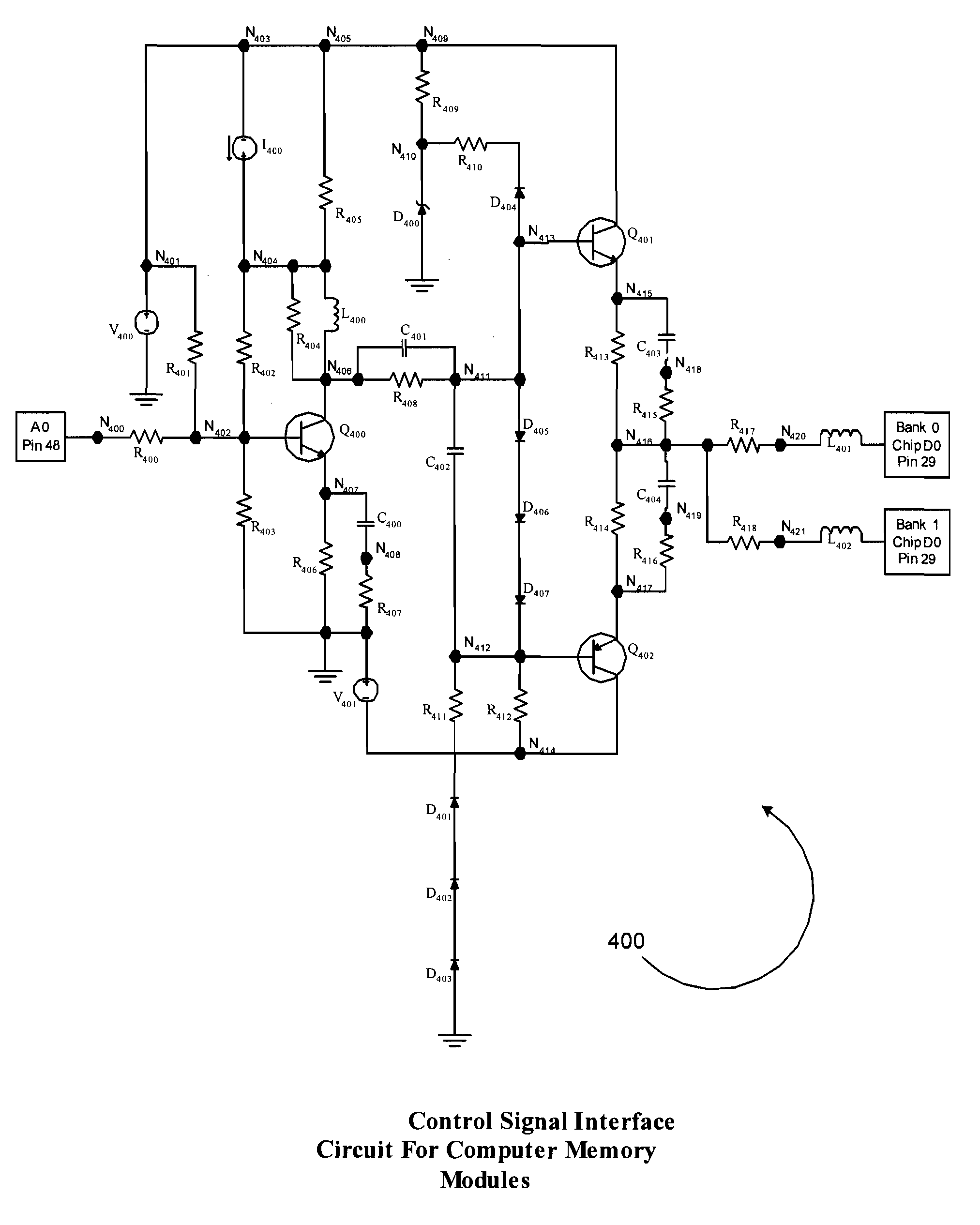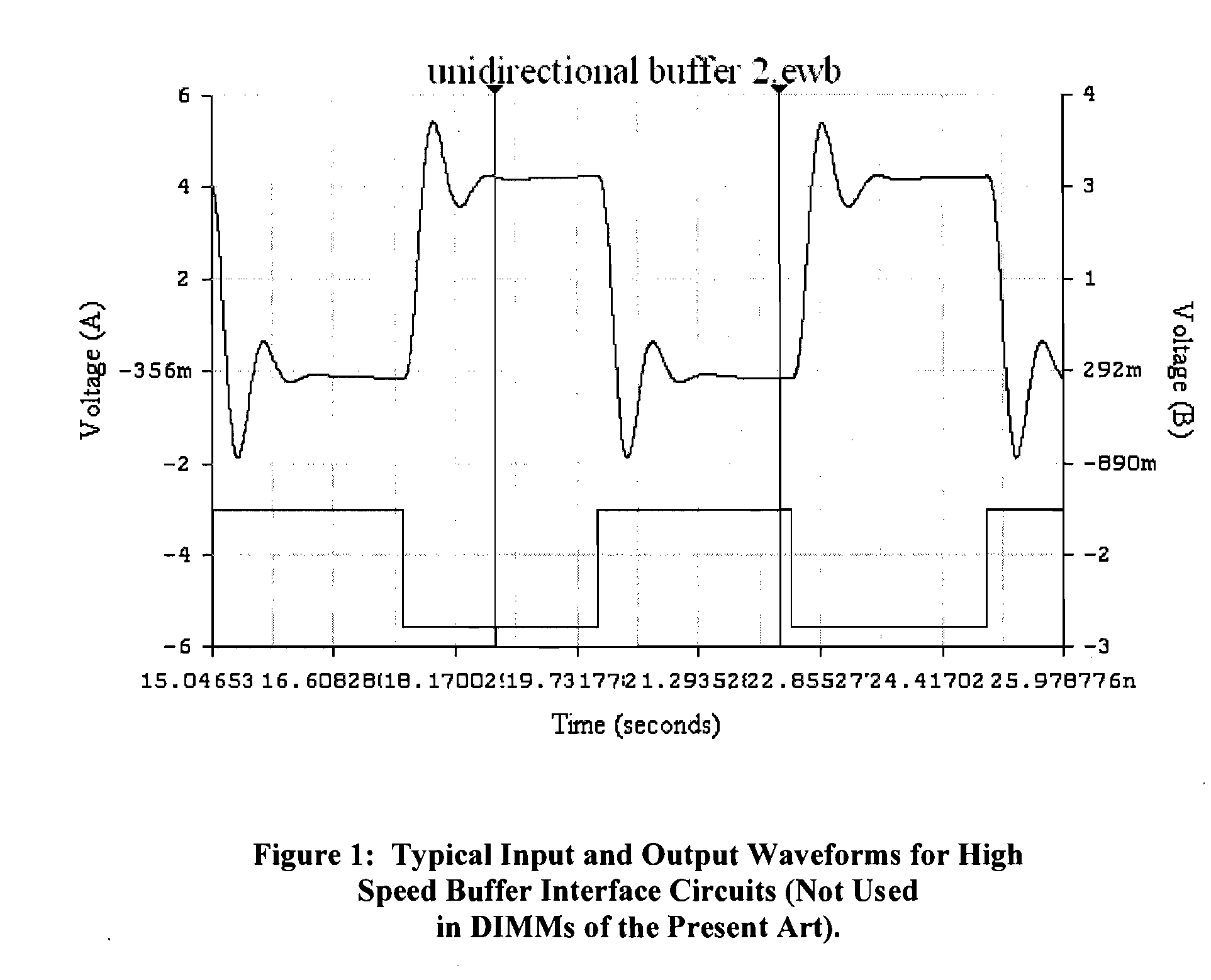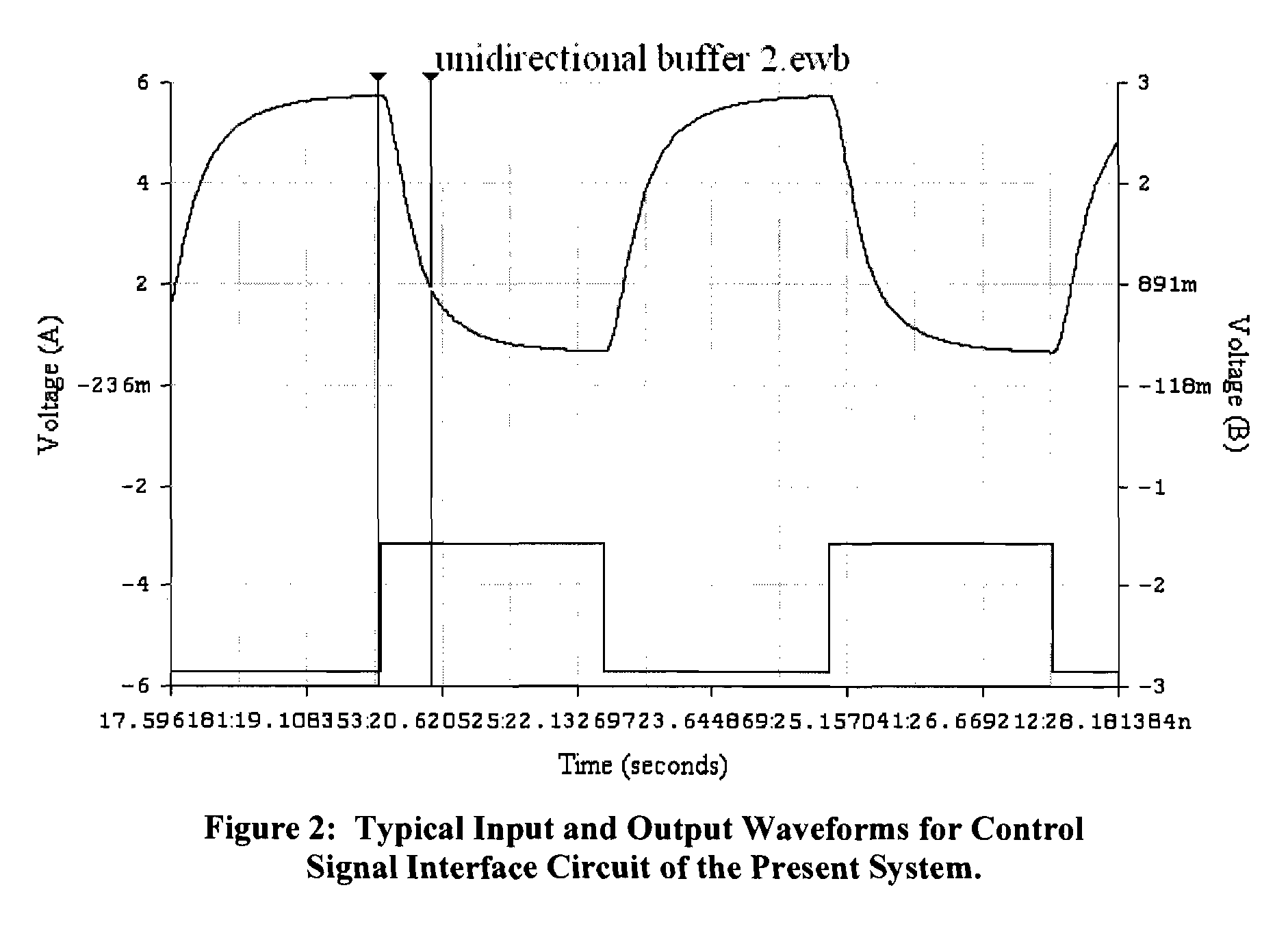Control signal interface circuit for computer memory modules
a control signal and memory module technology, applied in the field of computer memory modules, can solve the problems of effectively limiting memory access speeds, affecting the performance of memory access speeds, and requiring increased latency, so as to achieve easy realization, wide band operation, and small gain variation
- Summary
- Abstract
- Description
- Claims
- Application Information
AI Technical Summary
Benefits of technology
Problems solved by technology
Method used
Image
Examples
Embodiment Construction
[0024] The present system is a high speed, low input capacitance interface circuit. It is directed toward coupling unidirectional control signals from the input connector of a memory module to the appropriate pins of the memory devices on the module. In the following description, numerous specific details are set forth to provide a more thorough description of embodiments of the system. It is apparent, however, to one skilled in the art, that the system may be practiced without these specific details. In other instances, well known features have not been described in detail so as not to obscure the system.
[0025] Discussion of the present system is directed toward application to 184-pin, 2.5 Volt (VDD) / 2.5 Volt (VDDQ), Unbuffered, Non-ECC, Double Data Rate, Synchronous DRAM Dual In-Line Memory Modules (DDR SDRAM DIMMs), henceforth referred to as DIMMs. DIMMs are intended for use as main memory when installed in PCs and network servers. While the present discussion is directed toward...
PUM
 Login to View More
Login to View More Abstract
Description
Claims
Application Information
 Login to View More
Login to View More - R&D
- Intellectual Property
- Life Sciences
- Materials
- Tech Scout
- Unparalleled Data Quality
- Higher Quality Content
- 60% Fewer Hallucinations
Browse by: Latest US Patents, China's latest patents, Technical Efficacy Thesaurus, Application Domain, Technology Topic, Popular Technical Reports.
© 2025 PatSnap. All rights reserved.Legal|Privacy policy|Modern Slavery Act Transparency Statement|Sitemap|About US| Contact US: help@patsnap.com



